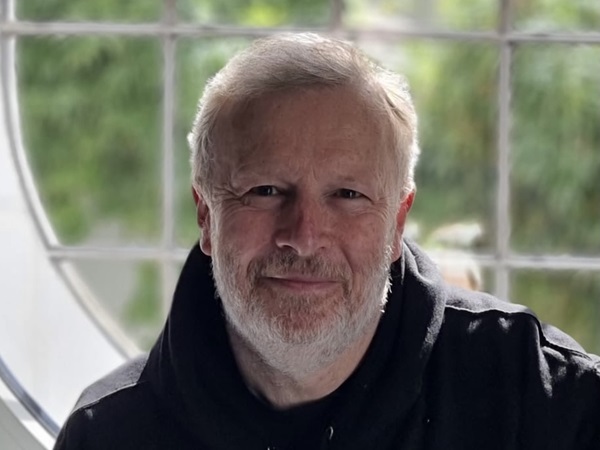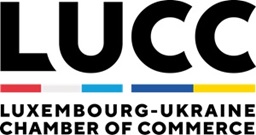 Paul Lesch;
Paul Lesch;
Paul Lesch is the curator of the Edward Steichen collections, regarding which 2025 is a significant year; he has planned a conference cycle, an exhibition at MUDAM has Steichen connections and he continues to be involved in research related to the life and work of Edward Steichen.
He shared his thoughts and plans with Chronicle.lu in a wide-ranging interview.
Chronicle.lu: Please tell us about the significance of 2025 in relation to Edward Steichen.
Paul Lesch: The year 2025 marks the 70th anniversary of Edward Steichen's iconic exhibition, The Family of Man, which first opened in January 1955 at MoMA in New York. The exhibition travelled to more than 45 countries, including Japan and Russia, reaching over nine million viewers in approximately 150 cities. Since 1994, it has been on permanent display in Luxembourg at the Clervaux Castle. The accompanying catalogue remains the best-selling photography book of all time and has never been out of print since 1955. The Family of Man features 503 photographs by 273 photographers from 69 countries, including some of the most influential figures of the 20th century, such as Dorothea Lange, Henri Cartier-Bresson, Ruth Orkin, Robert Frank and August Sander. Deeply humanist and pacifist in nature, Steichen regarded this exhibition as his most important achievement as an artist.
Chronicle.lu: Please tell us about the conference cycle you have planned (when, topics, for whom, etc.).
Paul Lesch: To mark the 70th anniversary of The Family of Man, a lecture series titled "Edward Steichen: An Eclectic Artist with Multiple Talents" will take place from March to December 2025. Organised by the CNA [Centre National de l'Audiovisuel] and the Commissariat aux Collections Edward Steichen, in collaboration with various partners across the country, the series will be hosted in multiple locations, including Esch-sur-Alzette (Musée National de la Résistance et des Droits Humains and Konschthal), Luxembourg City (Cercle Cité) and Clervaux/Marnach (Clervaux Castle and Cube 521).
This four-part lecture series will explore different aspects of Edward Steichen’s life and work. Talks will be conducted in Luxembourgish, French or English, depending on the venue.
The topics I will cover include:
1. The Family of Man: An Ode to Humanism Celebrating 70 Years
Inaugurated in January 1955 at MoMA in New York, The Family of Man remains the most visited photography exhibition in the world, having welcomed approximately ten million visitors across five continents over 70 years. Although its humanistic message has sometimes been sharply criticised, its relevance remains striking today. This major exhibition, which Steichen considered the pinnacle of his career, was gifted to Luxembourg in the early 1960s by the US government at the request of the renowned photographer of Luxembourgish origin. Available since 1975 (in an abridged version), it has been displayed in its entirety at Clervaux Castle since 1994. In this lecture, we will explore, with supporting documents and photographs, the origins of the exhibition, its philosophy, messages, scenography, reception, and its unique journey in Luxembourg.
2. Edward Steichen, Master of Celebrity Portraiture
Edward Steichen established himself as one of the great portraitists of the 20th century. Between 1898 and 1937, he created an impressive series of portraits, including several iconic self-portraits. His photos of celebrities from his time and members of his family, produced during his Pictorialist period in the early 20th century or for Vanity Fair and Vogue magazines in the 1920s and 30s, are among his most famous works. Using numerous illustrations, we will examine the history and aesthetics of his most emblematic portraits as well as lesser-known works.
3. Edward Steichen and His Wartime Engagements
During both World Wars of the 20th century, Edward Steichen served in the US Army, playing a key role in military photography. During World War II, he oversaw combat photography in the Pacific and organised exhibitions on the war. He also supervised the documentary The Fighting Lady, which won an Oscar in 1946. These war experiences deeply influenced his life and work. Through photographs and film excerpts, we will delve into these pivotal periods of his life.
4. The Little-Known Steichen
This lecture will shed light on the lesser-known aspects of Edward Steichen's life and work. Drawing on a rich collection of illustrations, we will explore his various activities, ranging from painter to gallerist, designer, botanist, nature lover, pioneer of colour photography, MoMA director, promoter of emerging artists, to his passion for experimental and avant-garde cinema.
Chronicle.lu: What will be happening at MUDAM in 2025 which will be connected with Edward Steichen?
Paul Lesch: New York artist Lisa Oppenheim has created an exhibition called Mr. Steichen, that will open at the MUDAM on 13 February 2025. This is how the MUDAM presents Lisa Oppenheim’s artistic approach:
"Oppenheim’s exhibition explores peripheral and often lesser-known aspects of the work of the Luxembourg-born American photographer and exhibition curator: his paintings, which he abandoned and largely destroyed in the 1920s; his lifelong passion for flowers, particularly Delphiniums, of which he created several varieties and his textile designs from the 1920s, based on photographs of everyday objects. 'Steichen’s wide-ranging practice is hard to imagine in our age of hyper-specialisation,' Oppenheim observes. 'In this exhibition, I would like to inhabit the practice of Steichen rather than examine any particular project. I plan to do with the work of Steichen what he did throughout his own long life: inhabit his tendency to ingest and reconstitute a wide range of practices and ideas and in that way hopefully expand an understanding of what it is to be a cultural producer.'
The exhibition also includes several photographs by Steichen from the collection of the MNAHA in Luxembourg, highlighting the role women played in his life and work, and the way he incorporated their presence and gestures into his photographs. Presented in the same installation, the works of Oppenheim and Steichen depict an abstract, subjective and kaleidoscopic portrait of 'Monsieur Steichen'."
Chronicle.lu: Apart from working directly with various players in connection with the permanent exhibition in Clervaux, you are continually involved in research related to the collections: please tell us more about this aspect of your work.
Paul Lesch: Even though numerous books and articles have been published on Edward Steichen, there are still aspects of his life and work that deserve further study. New or previously unused sources can provide valuable insights into Steichen and his work. I am currently working on several topics, and at the University of Luxembourg, both a PhD student and a Post-Doc researcher are exploring lesser-known aspects of his work. Furthermore, I am compiling a comprehensive Steichen bibliography that will serve as a valuable resource for researchers in Luxembourg and beyond, supporting their work and furthering the study of Steichen’s life and legacy.
Chronicle.lu: Do you also have engagements internationally directly related to the Edward Steichen collection?
Paul Lesch: Luxembourg maintains strong and personal ties with the Steichen Estate and the Steichen family in the United States, fostering ongoing collaborations. Additionally, there are connections with artists (as for instance Lisa Oppenheim) and researchers (Sarah McNear, Gerd Hurm, Shamoon Zamir…) from around the world, further enriching the exchange of knowledge and artistic exploration.
Chronicle.lu: Looking further ahead, what can one expect regarding The Family of Man and other parts of the Edward Steichen collection?
Paul Lesch: The year 2029 will mark another significant milestone for Edward Steichen - his 150th anniversary. The goal is to celebrate this occasion appropriately with events, exhibitions and/or books, though it is still too early to share specific details. Plans are also in progress for the coming years, but for now, it is too soon to provide further information.
It is worth noting that Luxembourg holds an important collection of Steichen’s photographs and curated exhibitions, including The Family of Man and The Bitter Years (CNA), as well as collections of the MNAHA, the City of Luxembourg, and the "Spuerkeess". The aim is to build upon this rich Steichen heritage and showcase it in the most effective and meaningful way. A close collaboration between all these institutions would, of course, be ideal.








